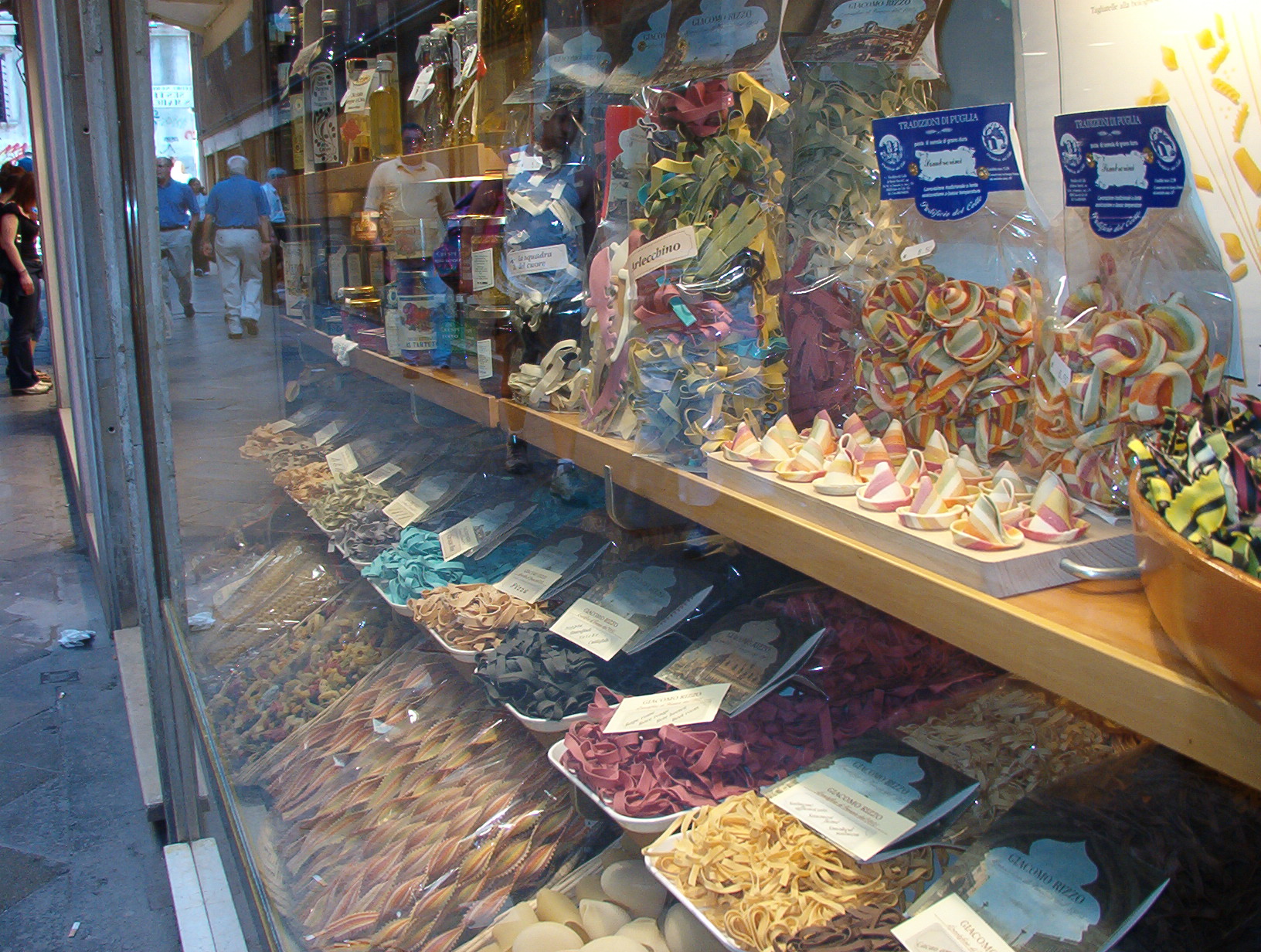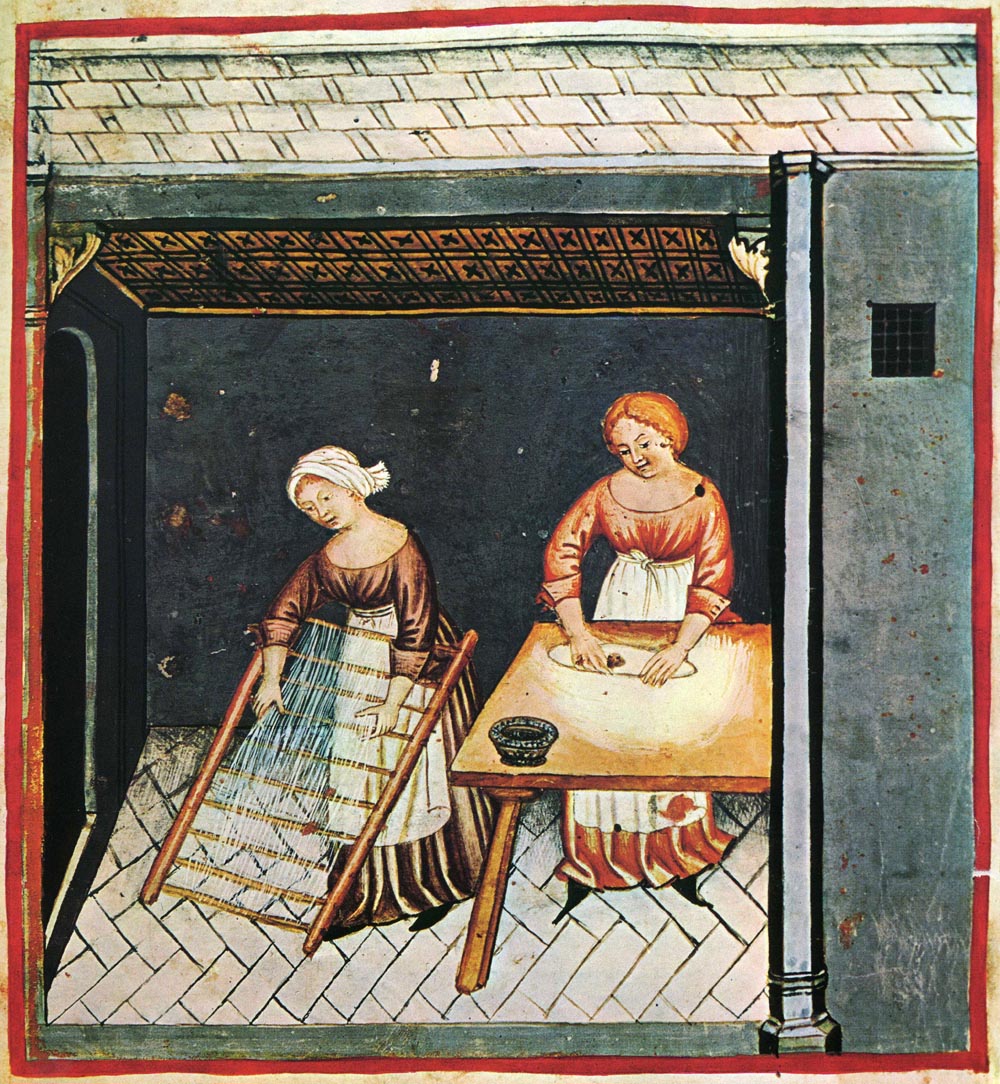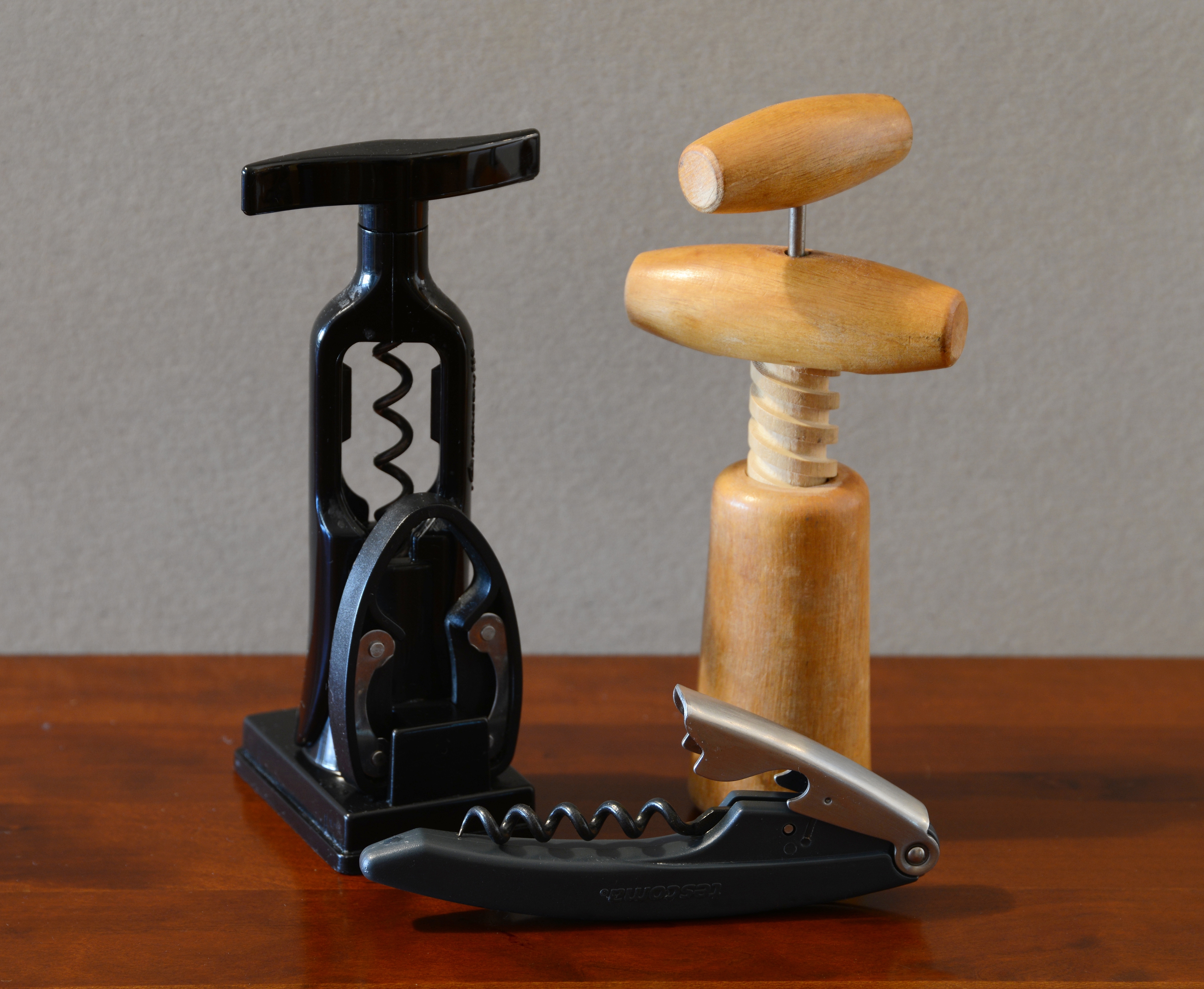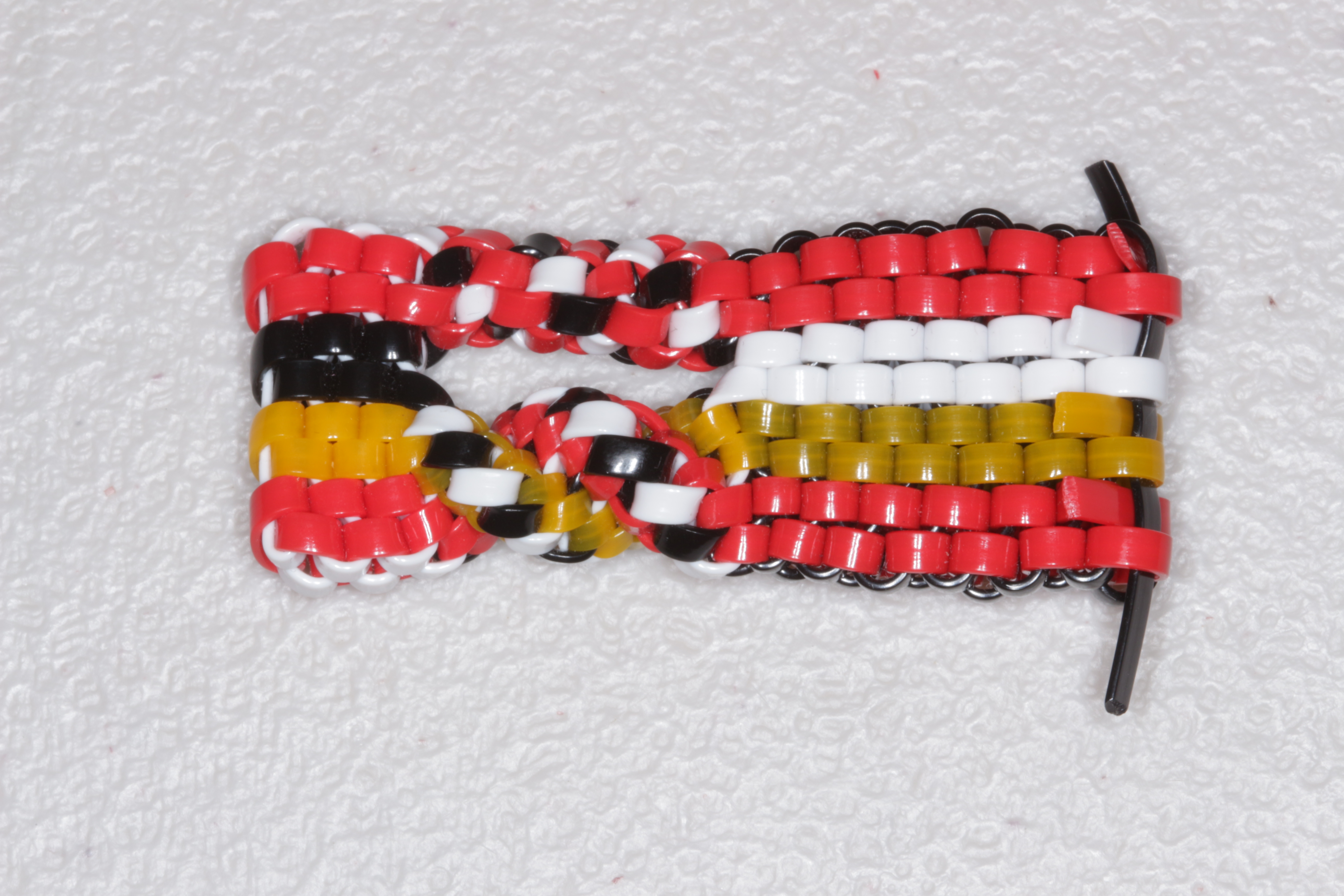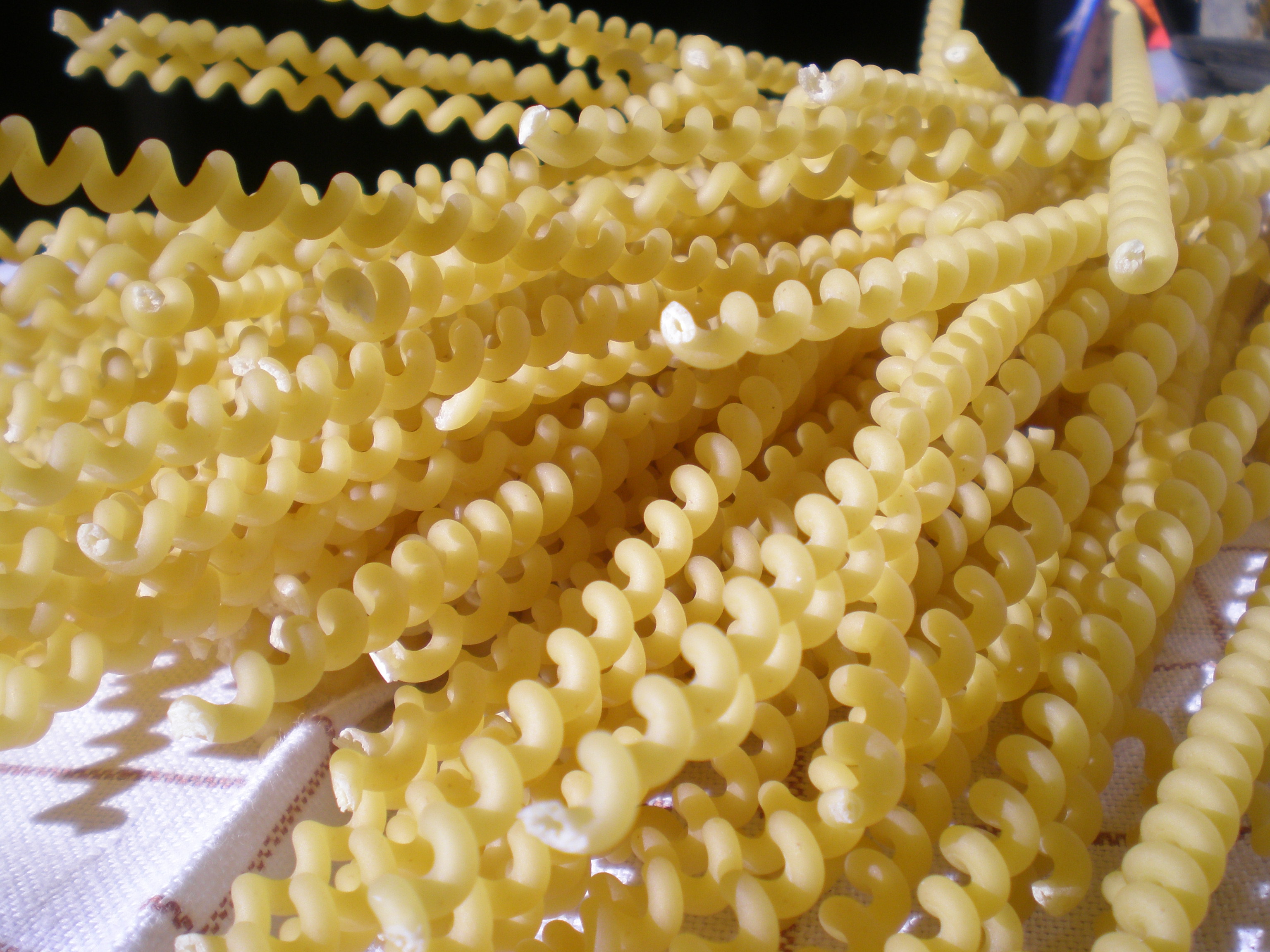|
Cavatappi
''Cavatappi'' (; ) is macaroni formed in a helical tube shape. Certain areas of the US and Canada may also refer to it as "double elbows" or "scoobi doo" pasta, purportedly because of their resemblance to Scoubidou. It should not be confused with fusilli, which, despite also being commonly referred to as "corkscrew pasta", is a different shape all together. The distinguishing characteristics being fusilli's flat twist, rather than ''cavatappi'''s hollow tube shape. ''Cavatappi'' is usually scored with lines or ridges (''rigati'' in Italian) on the surface. ''Cavatappi'' is a type of macaroni, or thick, hollow pasta that is made without using eggs. It may be yellow in color, like most pastas, or have vegetables or a food coloring added to make it green or red. It can be used in a variety of dishes, including salads, soups, and casseroles. Etymology ''Cavatappi'' is an Italian word created by compounding ''cava'' and ''tappi'', which literally means 'stopper (or top or cap) extr ... [...More Info...] [...Related Items...] OR: [Wikipedia] [Google] [Baidu] |
List Of Pasta
There are many different varieties of pasta. They are usually sorted by size, being long (''pasta lunga''), short (''pasta corta''), stuffed (''ripiena''), cooked in broth (''pastina''), stretched (''strascinati'') or in dumpling-like form (''gnocchi/gnocchetti''). Yet, due to the variety of shapes and regional variants, "one man's ''gnocchetto'' can be another's ''strascinato''". Some pasta varieties are uniquely regional and not widely known; many types have different names based on region or language. For example, the cut rotelle is also called ''ruote'' in Italy and ''wagon wheels'' in the United States. Manufacturers and cooks often invent new shapes of pasta, or may rename pre-existing shapes for marketing reasons. Italian pasta names often end with the masculine plural diminutive suffixes ''-ini'', ''-elli'', ''-illi'', ''-etti'' or the feminine plurals ''-ine'', ''-elle'' etc., all conveying the sense of "little"; or with the augmentative suffixes ''-oni'', ''-one'', ... [...More Info...] [...Related Items...] OR: [Wikipedia] [Google] [Baidu] |
Adriano Celentano
Adriano Celentano (; born 6 January 1938) is an Italian musician, singer, composer, actor, and filmmaker. He is dubbed "''il Molleggiato''" (the springy one) because of his dancing. Celentano's many albums frequently enjoyed both commercial and critical success. Often credited as the author of both the music and lyrics of his songs, according to his wife Claudia Mori, some were written in collaboration with others. Due to his prolific career, both in Italy and abroad, he is considered one of the pillars of Italian music. Celentano is recognized for being particularly perceptive of changes in the music business, and is credited for having introduced rock and roll to Italy. As an actor, Celentano has appeared in 39 films, mostly comedies. Early life Celentano was born in Milan at 14 Via Cristoforo Gluck, and this address later became the subject of the famous song "Il ragazzo della via Gluck" ("The boy from Gluck Street"). His parents were from Foggia, in Apulia, and had moved ... [...More Info...] [...Related Items...] OR: [Wikipedia] [Google] [Baidu] |
Italy
Italy ( it, Italia ), officially the Italian Republic, ) or the Republic of Italy, is a country in Southern Europe. It is located in the middle of the Mediterranean Sea, and its territory largely coincides with the homonymous geographical region. Italy is also considered part of Western Europe, and shares land borders with France, Switzerland, Austria, Slovenia and the enclaved microstates of Vatican City and San Marino. It has a territorial exclave in Switzerland, Campione. Italy covers an area of , with a population of over 60 million. It is the third-most populous member state of the European Union, the sixth-most populous country in Europe, and the tenth-largest country in the continent by land area. Italy's capital and largest city is Rome. Italy was the native place of many civilizations such as the Italic peoples and the Etruscans, while due to its central geographic location in Southern Europe and the Mediterranean, the country has also historically b ... [...More Info...] [...Related Items...] OR: [Wikipedia] [Google] [Baidu] |
Pasta
Pasta (, ; ) is a type of food typically made from an unleavened dough of wheat flour mixed with water or eggs, and formed into sheets or other shapes, then cooked by boiling or baking. Rice flour, or legumes such as beans or lentils, are sometimes used in place of wheat flour to yield a different taste and texture, or as a gluten-free alternative. Pasta is a staple food of Italian cuisine. Pastas are divided into two broad categories: dried () and fresh (). Most dried pasta is produced commercially via an extrusion process, although it can be produced at home. Fresh pasta is traditionally produced by hand, sometimes with the aid of simple machines.Hazan, Marcella (1992) ''Essentials of Classic Italian Cooking'', Knopf, Fresh pastas available in grocery stores are produced commercially by large-scale machines. Both dried and fresh pastas come in a number of shapes and varieties, with 310 specific forms known by over 1,300 documented names.Zanini De Vita, Oretta, ''Ency ... [...More Info...] [...Related Items...] OR: [Wikipedia] [Google] [Baidu] |
Corkscrew
A corkscrew is a tool for drawing corks from wine bottles and other household bottles that may be sealed with corks. In its traditional form, a corkscrew simply consists of a pointed metallic helix (often called the "worm") attached to a handle, which the user screws into the cork and pulls to extract it. Corkscrews are necessary because corks themselves, being small and smooth, are difficult to grip and remove, particularly when inserted fully into an inflexible glass bottle. More recent styles of corkscrew incorporate various systems of levers that further increase the amount of force that can be applied outwards upon the cork, making easier the extraction of difficult corks. History Its design may have derived from the gun worm which was a device used by men to remove unspent charges from a musket's barrel in a similar fashion, from at least the early 1630s.winepros.com.au. The corkscrew is possibly an English invention, due to the tradition of beer and cider, and ''Treat ... [...More Info...] [...Related Items...] OR: [Wikipedia] [Google] [Baidu] |
Macaroni
Macaroni (, Italian: maccheroni) is dry pasta shaped like narrow tubes.Oxford DictionaryMacaroni/ref> Made with durum wheat, macaroni is commonly cut in short lengths; curved macaroni may be referred to as elbow macaroni. Some home machines can make macaroni shapes but, like most pasta, macaroni is usually made commercially by large-scale extrusion. The curved shape is created by different speeds of extrusion on opposite sides of the pasta tube as it comes out of the machine. The word "macaroni" is often used synonymously with elbow-shaped macaroni, as it is the variety most often used in macaroni and cheese recipes. In Italy and other countries, the noun ''maccheroni'' can refer to straight, tubular, square-ended ''pasta corta'' ("short-length pasta") or to long pasta dishes, as in ''maccheroni alla chitarra'' and ''frittata di maccheroni'', which are prepared with long pasta like spaghetti. In the United States, federal regulations define three different shapes of drie ... [...More Info...] [...Related Items...] OR: [Wikipedia] [Google] [Baidu] |
Helix
A helix () is a shape like a corkscrew or spiral staircase. It is a type of smooth space curve with tangent lines at a constant angle to a fixed axis. Helices are important in biology, as the DNA molecule is formed as two intertwined helices, and many proteins have helical substructures, known as alpha helices. The word ''helix'' comes from the Greek word ''ἕλιξ'', "twisted, curved". A "filled-in" helix – for example, a "spiral" (helical) ramp – is a surface called '' helicoid''. Properties and types The ''pitch'' of a helix is the height of one complete helix turn Turn may refer to: Arts and entertainment Dance and sports * Turn (dance and gymnastics), rotation of the body * Turn (swimming), reversing direction at the end of a pool * Turn (professional wrestling), a transition between face and heel * Turn, ..., measured parallel to the axis of the helix. A double helix consists of two (typically congruent) helices with the same axis, differing by a tran ... [...More Info...] [...Related Items...] OR: [Wikipedia] [Google] [Baidu] |
Scoubidou
Scoubidou (Craftlace, scoobies, lanyard, or gimp) is material used in knotting craft. It originated in France, where it became a fad in the late 1950s and has remained popular. It is named after the 1958 song of the same name by the French singer Sacha Distel. Scoubidou returned to fashion in various countries, including the United Kingdom, in 2004 and 2005. It uses commercially supplied plastic strips or tubes. Thread The most common kind of thread used for the craft is flat and comes in many colors, sometimes called "lanyard" or "gimp thread," often depending on region. Another kind of scoubidou thread is supple, round, and hollow plasticized PVC tubes usually about 80 centimetres in length. They are sold in various colors, sizes, and types, and are used to make items by binding them together with knots. On account of their elasticity and hollow cross-section — which enables them to collapse and deform when pulled — they form tight and stable knots. Key chains, friend ... [...More Info...] [...Related Items...] OR: [Wikipedia] [Google] [Baidu] |
Fusilli
Fusilli () are a variety of pasta that are formed into corkscrew or helical shapes. The word ''fusilli'' presumably comes from ''fuso'' ("spindle"), as traditionally it is "spun" by pressing and rolling a small rod over the thin strips of pasta to wind them around it in a corkscrew shape. In addition to plain and whole wheat varieties, as with any pasta, other colours can be made by mixing other ingredients into the dough, which also affects the flavour, for example, beetroot or tomato for red, spinach for green, and cuttlefish Cuttlefish or cuttles are marine molluscs of the order Sepiida. They belong to the class Cephalopoda which also includes squid, octopuses, and nautiluses. Cuttlefish have a unique internal shell, the cuttlebone, which is used for control of ... ink for black. Variants Fusilli may be solid or hollow. A variant type of fusilli are formed as hollow tubes of pasta that are twisted into springs or corkscrews and are called fusilli bucati. Another ... [...More Info...] [...Related Items...] OR: [Wikipedia] [Google] [Baidu] |
Italian Language
Italian (''italiano'' or ) is a Romance language of the Indo-European language family that evolved from the Vulgar Latin of the Roman Empire. Together with Sardinian, Italian is the least divergent language from Latin. Spoken by about 85 million people (2022), Italian is an official language in Italy, Switzerland ( Ticino and the Grisons), San Marino, and Vatican City. It has an official minority status in western Istria (Croatia and Slovenia). Italian is also spoken by large immigrant and expatriate communities in the Americas and Australia.Ethnologue report for language code:ita (Italy) – Gordon, Raymond G., Jr. (ed.), 2005. Ethnologue: Languages of the World, Fifteenth edition. Dallas, Tex.: SIL International. Online version ... [...More Info...] [...Related Items...] OR: [Wikipedia] [Google] [Baidu] |
Corkscrew
A corkscrew is a tool for drawing corks from wine bottles and other household bottles that may be sealed with corks. In its traditional form, a corkscrew simply consists of a pointed metallic helix (often called the "worm") attached to a handle, which the user screws into the cork and pulls to extract it. Corkscrews are necessary because corks themselves, being small and smooth, are difficult to grip and remove, particularly when inserted fully into an inflexible glass bottle. More recent styles of corkscrew incorporate various systems of levers that further increase the amount of force that can be applied outwards upon the cork, making easier the extraction of difficult corks. History Its design may have derived from the gun worm which was a device used by men to remove unspent charges from a musket's barrel in a similar fashion, from at least the early 1630s.winepros.com.au. The corkscrew is possibly an English invention, due to the tradition of beer and cider, and ''Treat ... [...More Info...] [...Related Items...] OR: [Wikipedia] [Google] [Baidu] |
Barilla (company)
Barilla G. e R. Fratelli S.p.A. is an Italian multinational food company. It is the world's largest pasta producer. History The company was founded in 1877 as a bakery shop in Parma, Italy by Pietro Barilla Sr. The company expanded in 1908, and in 1910 Barilla inaugurated a new pasta factory equipped with a "continuous baking" oven. After the death of Pietro Barilla Sr. his sons Riccardo and Gualtiero took the reins of the family company, increasing the production and distribution of products, thanks to technological innovations which allowed the company to rapidly transform itself, over the course of the 1920s and 1930s, into the most important bread and pasta company in Emilia-Romagna. In 1919 Gualtiero Barilla died, leaving his brother Riccardo at the helm of the company together with his wife Virginia. In 1947 Riccardo also died and the management passed to his sons Pietro and Gianni, exponents of the third generation. With the advent of the two Barilla brothers, the comp ... [...More Info...] [...Related Items...] OR: [Wikipedia] [Google] [Baidu] |
